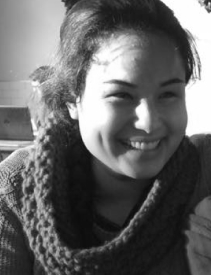Episode One: Rocks
This episode is about the forced removal of Japanese Americans in the aftermath of Pearl Harbor, but it’s also about the bedrock that lies beneath. Literally. We talk about rocks — not just in the geographic sense, but also the stories they hold: of origins and stolen lands; of passing time and reviving tradition; of memory and of the questions we learned not to ask.
Episode Two: Paper
After Japanese Americans were released from incarceration, most of what remained were mounds and mounds of paper. Papers that told us about choices the incarcerees made, big and small. About how even in camp, people were still just being people. In this episode we’re talking about paper—the stories it tells, the ones it doesn’t, and what that says about power in historical narratives.
Episode Three: Fences
Not all fences are of the white picket sort. Many, in fact, represent a reality that goes against everything America imagines itself to be. In this episode, we’re going to talk about the barbed-wire fence of World War II concentration camps—what it meant to the people it imprisoned, and to those it kept out.
Episode Four: Cameras
Pictures allow us to peer into the past, but those images are often far more complicated than what initially meets the eye. Photographs portrayed Japanese Americans as menacing threats, as hapless victims, as model Americans. But there were also covert acts of resistance playing out on both sides of the camera. In this episode, we talk about the visual record of WWII incarceration and the stories that unfolded behind the lens.
Episode Five: Latrines
In this episode, we talk about everything you never wanted to know about latrines in WWII Japanese American concentration camps. Our research may have gone down the toilet, but we promise this story isn’t all about poop. We’ll look at how incarcerees adapted to extremely adverse conditions and the unique challenges women incarcerees faced, including sexual violence and harassment.
Episode Six: Food
Food is more than just sustenance. It’s a vehicle for culture, a way to delight in the world around us, engage our senses, connect with other people. It’s the lessons we pass down between generations — and the ones we don’t. This episode is about food in Japanese American concentration camps. It’s about mutton, so much mutton…but it’s also about disrupted traditions, about memory, about politics, and about subtle—and not so subtle—acts of resistance.
Visit the Campu Education Hub for lesson plans and discussion prompts for teaching the Campu podcast, geared towards high school and college-age learners.
Campu Podcast Producers
We are a brother-sister team descended from the Heart Mountain, Jerome, and Gila River concentration camps. Our great-grandfather collected rocks at Heart Mountain. Collecting things in camp was so popular it had a name: campu no kuse, or camp custom. In this podcast, we collect stories—the stories of the people who lived through the Japanese American concentration camps.

Hana Maruyama, Co-Producer, Researcher, Writer
Hana is a PhD candidate in American Studies at the University of Minnesota. She formerly worked for American Public Media’s Order 9066, the Smithsonian Asian Pacific American Center, and the Heart Mountain Interpretive Center.
Contact Hana at
hana.maruyama@uconn.edu

Noah Maruyama, Co-Producer, Composer, Audio Engineer
Noah is an audio engineer, producer, and composer based in Washington, DC. He has worked with Levi Kreis, the Eric Felten Jazz Orchestra, the Ahmed Warshanna Septet, & Dominic Ellis, and recently graduated from the University of Maryland – Baltimore County.
Contact Noah at
noahmaruyama@gmail.com





